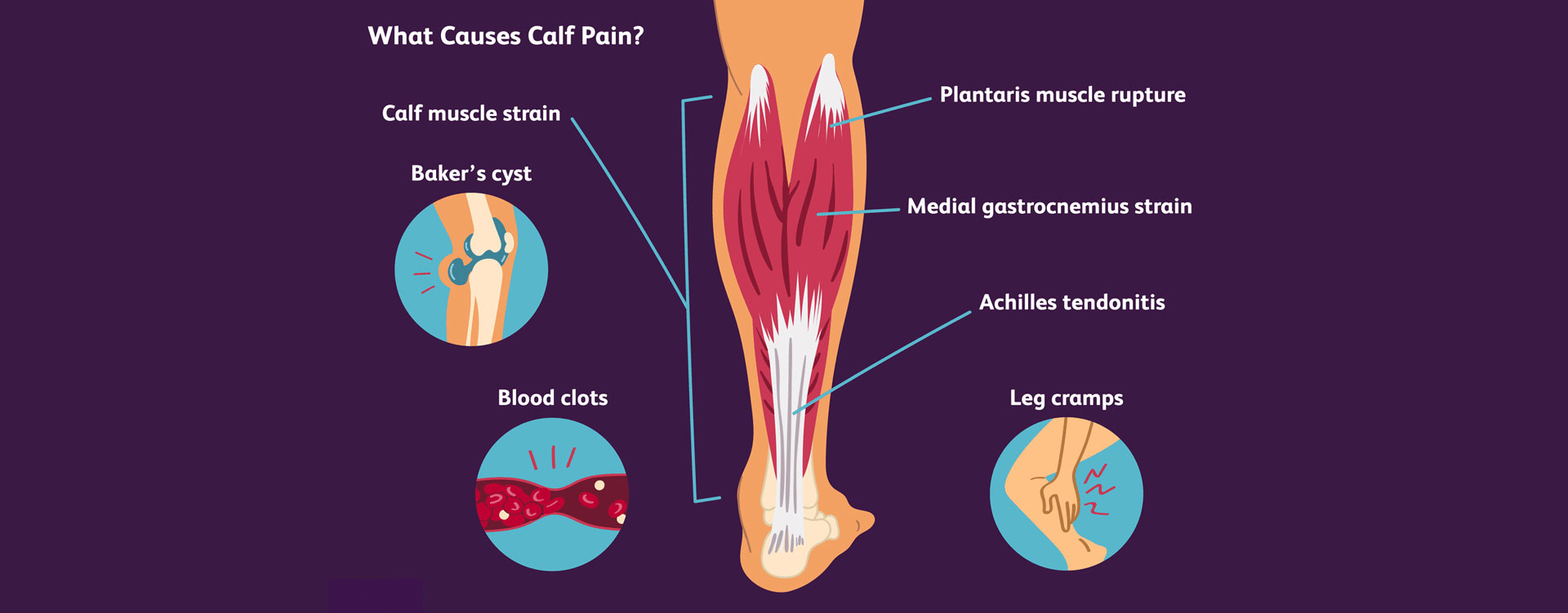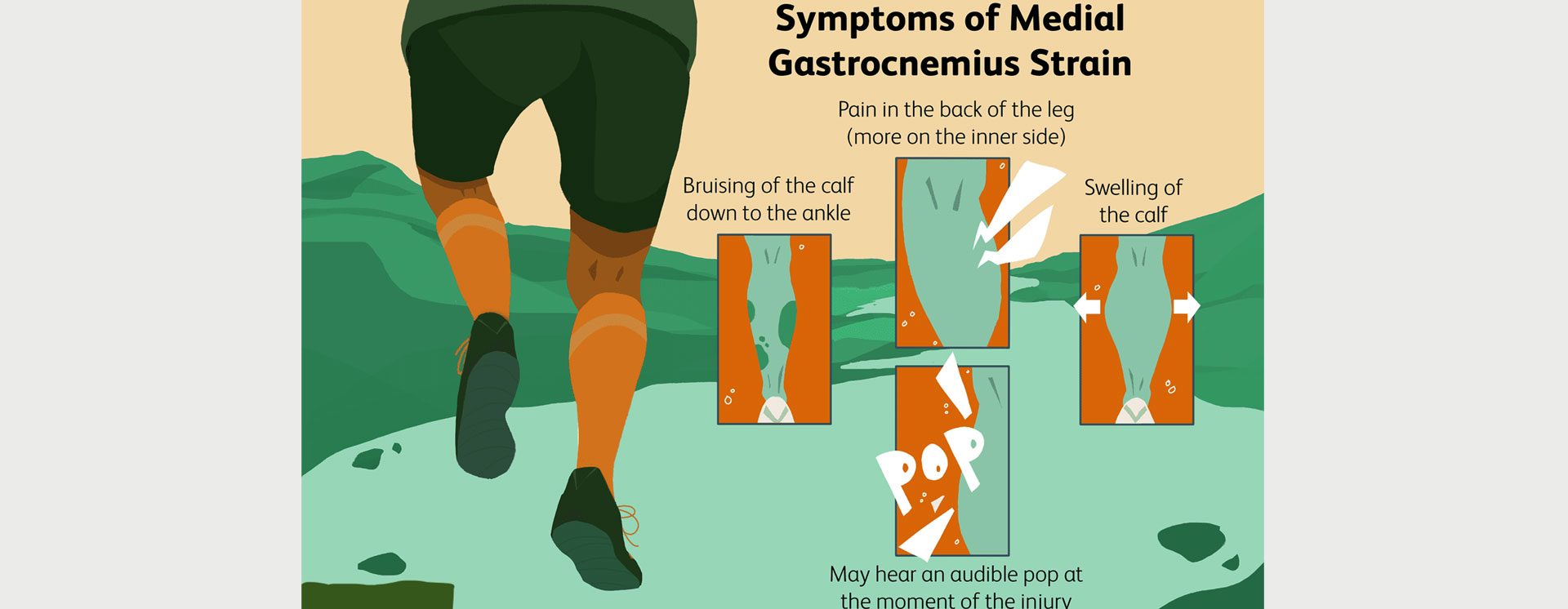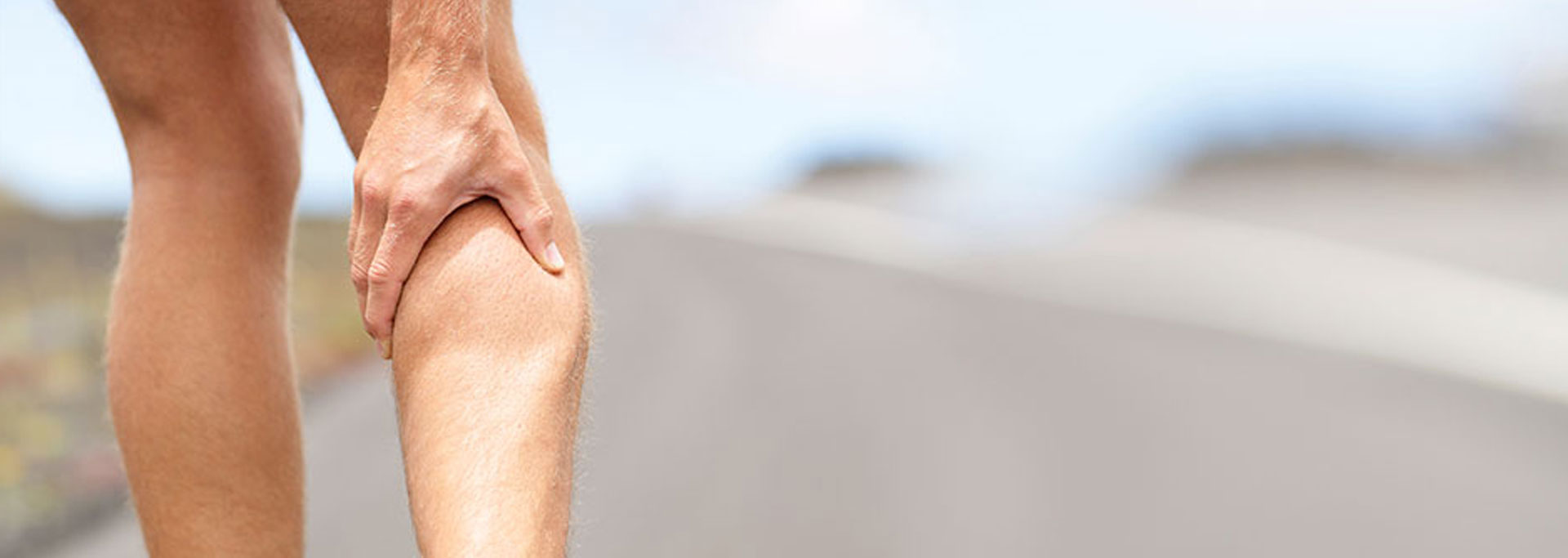Calf Strain
LOWER LEG
GASTROCNEMIUS MUSCLE STRAIN
a.k.a. CALF STRAIN

The lower leg plays a huge role in the biomechanics of the body. We use it for all of our locomotive activities, from walking to running, standing to jumping. It gets tons of use in any activity that requires explosive power, so of course it’s a major part in sports. If an athlete isn’t properly trained or conditioned, they can strain their calf muscles suddenly, or gradually over time. We see this regularly at MOTUS, and have perfected our ability to treat the root of the problem.
The calf muscle is actually made up of three muscles in the back of the leg — the gastrocnemius, the plantaris, and the soleus. Together, the gastrocnemius and the soleus allow plantarflexion, where the toes point away from the leg. This is the movement that allows us to walk and run. They also provide flexion in the knee. The plantaris helps with these motions as well, but isn’t as much of a contributor as the other two calf muscles.
Most of the time when a calf is injured, it’s the gastrocnemius that’s hurt. This muscle is bi-articular, meaning it crosses two joints — in this case, the ankle and the knee. Bi-articular muscles are more likely to be strained because during activity they have to deal with more sudden changes in length and contraction.
A lot of calf injuries occur in sports like soccer or track, which demand sudden and intense acceleration and deceleration, both of which can strain the calf muscles.

Football, rugby, tennis, and dancing are also at high risk of calf injuries. The more fatigued an athlete becomes, the more likely they are to injure their lower leg.
Most calf injuries are at the medial head of the gastrocnemius. Athletes usually feel a sudden pain, and might feel like they were just kicked in the back of the leg. More pain and swelling set in after the injury.
Depending on the severity of the injury, a calf injury could take one week to several months to heal. When we diagnose your injury, we will be able to make an estimate of how long it will be before you can return to activity. With a calf injury, it’s imperative that you follow the recommended recovery process. Otherwise, re-injury is likely.
As we work with you on recovery, we’ll introduce stretches and exercises that will help you heal, as well as routines that can give you the strength and techniques to prevent another injury in the future.

3 Ways to Level Up Your Rehab and Injury Prevention With Us





